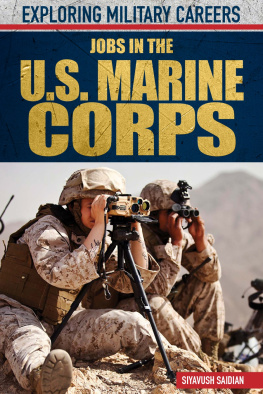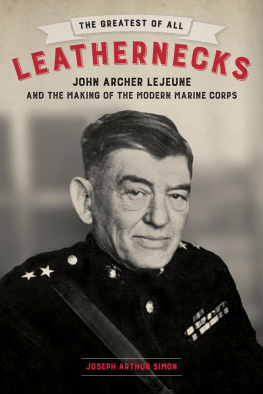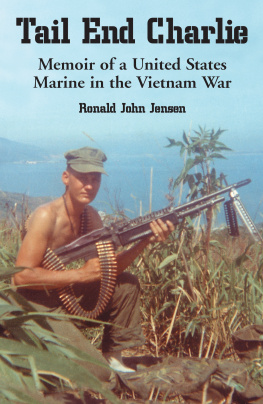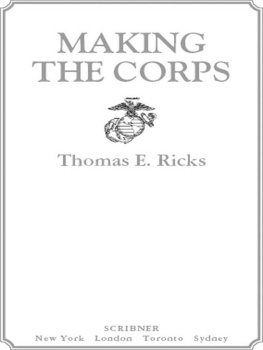A TRUST
BETRAYED


Copyright 2014 by Mike Magner
All rights reserved. No part of this publication may be reproduced, stored in a retrieval system, or transmitted, in any form or by any means, electronic, mechanical, photocopying, recording, or otherwise, without the prior written permission of the publisher. For information, address Da Capo Press, 44 Farnsworth Street, 3rd Floor, Boston, MA 02210.
Set in 11.5 point Adobe Caslon Pro by The Perseus Books Group
Library of Congress Cataloging-in-Publication Data
Magner, Mike.
A trust betrayed : the untold story of Camp Lejeune and the poisoning of generations of marines and their families / Mike Magner.
pages cm.
A Merloyd Lawrence book.
Includes bibliographical references and index.
ISBN 978-0-306-82258-2 (e-book) 1. Drinking waterContaminationNorth CarolinaCamp LejeuneHistory. 2. GroundwaterPollutionNorth CarolinaCamp LejeuneHistory. 3. MarinesHealth and hygieneNorth CarolinaCamp LejeuneHistory. 4. Families of military personnelHealth and hygieneNorth CarolinaCamp LejeuneHistory. 5. PoisoningNorth CarolinaCamp LejeuneHistory. 6. Environmentally induced diseasesNorth CarolinaCamp LejeuneHistory. 7. Camp Lejeune (N.C.)History. 8. Camp Lejeune (N.C.)Environmental conditions. I. Title.
RA592.N8M34 2014
363.6'10975623dc23
2013045263
Published as a Merloyd Lawrence Book by Da Capo Press
A Member of the Perseus Books Group
www.dacapopress.com
Da Capo Press books are available at special discounts for bulk purchases in the U.S. by corporations, institutions, and other organizations. For more information, please contact the Special Markets Department at the Perseus Books Group, 2300 Chestnut Street, Suite 200, Philadelphia, PA 19103, or call (800) 810-4145, ext. 5000, or e-mail .
10 9 8 7 6 5 4 3 2 1
For the victims of military and industrial pollution, especially those exposed during service to their country, only to be treated as collateral damage.
Contents

We take care of our own.
MARINE CORPS SLOGAN
T he ambulance from Fort Belvoir, Virginia, raced around the freshly built Capital Beltway, siren screaming and red lights whirling, on the evening of June 26, 1967, carrying Anne Townsend and her gasping three-month-old son to Bethesda Naval Hospital in Maryland. As Anne cradled her baby on the back bench, the driver remarked that he and his fellow medic liked to stick to the busy freeways so that, if the aging vehicle broke downwhich happened frequently, he said without much alarmtheyd be able to get help fairly quickly. I prayed that this would not be the night, Anne would recall later.
When the van pulled into the driveway of the worlds most famous military hospital around 10:30 p.m., the attendants rushed the infant inside and told Anne to go directly to the admissions desk. There she was relieved to see, scrawled on the blackboard: Townsend baby to pediatric ward. At least they were expecting us, she thought. After checking in, Anne followed the green line on the floor to pediatrics as she had been instructed, rushing down the hallways anxious to see how the doctors were treating her son. When she arrived at the ward, she was stunned to find four or five attendants in hospital garb casually sitting around near the entry, a few with their feet propped up on the reception desk. Then she spotted her baby in the arms of a nurse, who looked at her colleagues and said matter-of-factly, Doesnt he need oxygen? Hes turning blue.

The boy, Christopher Thomas Townsend, was the son of a career Marine who was literally a child of Pearl Harbor. Tom Townsend was ten years old in 1941 when his father, Arthur M. Townsend of Jackson, Michigan, was an officer on the USS St. Louis, a light cruiser based at the headquarters of the Pacific fleet in Hawaii. A 1924 graduate of the United States Naval Academy, Arthur Townsend had served for years at the Navy base in San Diegowhere Tom was born on New Years Day in 1931before being transferred to Hawaii in 1938. The familyArthur and his wife, Nietta, along with Tom and his older brother, Jacklived in the beach community of Kailua, on the north side of the island less than ten miles from Honolulu.
Life on the island was about as close as a boy could get to paradise. Tom would often wander along the beach scavenging for limpets, a type of sea snail considered a delicacy in the Pacific. An abandoned pool filled by waves from the surf served as his personal swimming hole. Once as he was lounging in the pool and eating limpets, a young woman came along and struck up a conversation. She invited Tom to her home for cake and cookies; the home turned out to be a palatial mansion called Shangri La, and his hostess turned out to be Doris Duke, a tobacco-fortune heiress who at the time was known as the richest girl in the world.
The St. Louis went to sea in November 1941Tom learned later that his fathers ship had been part of a mission to the Dutch East Indies to help the Dutch and British navies coordinate their defenses against Japanese expansion in the region. The cruiser returned to Pearl Harbor on December 4, and two days later, on Saturday night, Arthur Townsend and his wife went to a dance to celebrate their reunion, leaving Tom and his brother at home.
Tom woke up before the rest of the family the next morning and, as he usually did on Sundays, went outside to find the Advertiser so he could read the funnies. Before he even looked for the newspaper, though, his eyes were diverted toward the southern skies, which were filled with buzzing planes and clouds of smoke. Toms neighborhood was on a hill near the Punchbowl Crater (where a military cemetery sits today), and when he moved to a spot at the edge of a cliff, he could see the city of Honolulu and, to the right, behind the hills, the Navy base in Pearl Harbor. I watched a couple of dog-fights and saw antiaircraft fire, Townsend later recalled. Then I saw a big explosion, with thick black smoke and red and yellow flames. I assume thats when the Arizona got hit.
The boy ran to a water tank further up the hill, in a field surrounded by a thick hedge that kept Tom and his friends from running off the edge of a cliff when they played football there. Looking down over the hedge toward the port at Honolulu, he noticed the Coast Guard ship, the Roger B. Taney, firing at aircraft, Townsend said. Then all of a sudden a Zero came from the north, went down in the crater and came up and was machine-gunning the Coast Guard ship in the harbor. It flew right past me maybe fifty feet away. I looked right at the pilot, and he was firing his guns that shoot out of the wing.... I knew it was a Zero because Id read about them, and it had the big red circle on the sides and the wings.
Tom starting picking up the brass remains of shell casings that had dropped from the plane. They were hot, so he quickly scooped them into his baseball cap and ran home. His parents were still asleep, so Tom pounded on the door, burst into the bedroom, and dumped the warm metal on his fathers chest, exclaiming, Here you go, Dad. The Japanese are bombing Pearl Harbor! Arthur Townsend shot out of bed and scrambled into his uniform, then went out and sped away in his refurbished 1930 Model-A Ford, headed to his ship.
Next page









